Sign up for workout ideas, training advice, reviews of the latest gear and more.

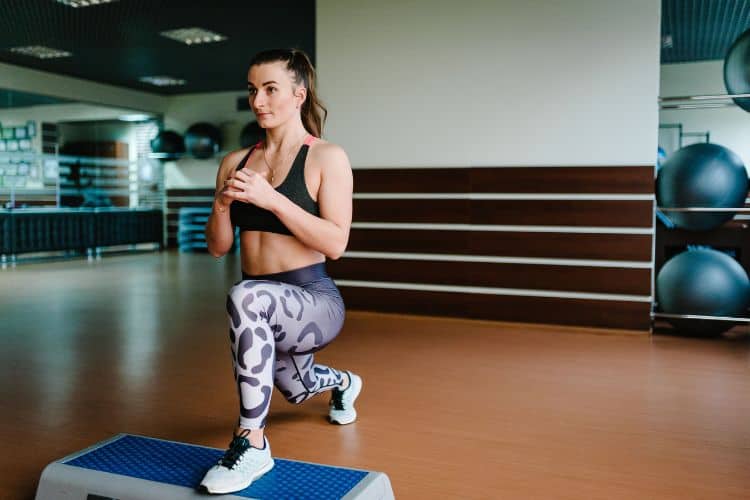
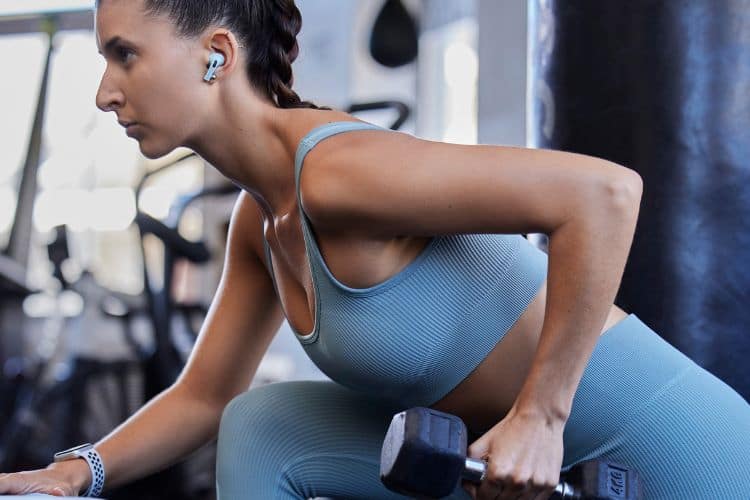
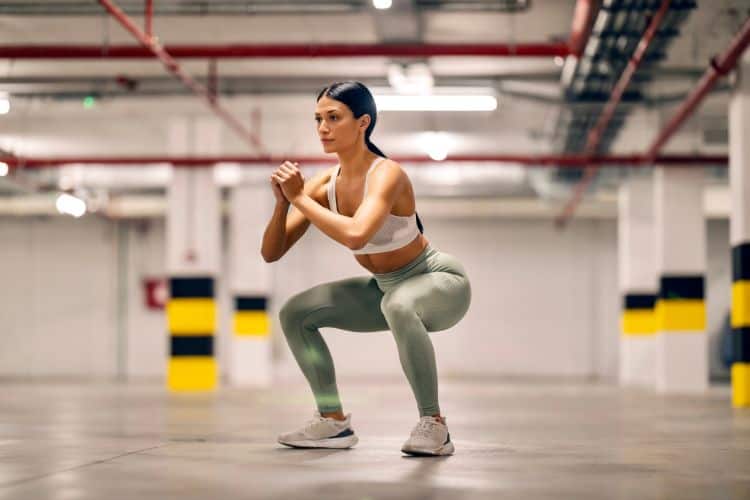
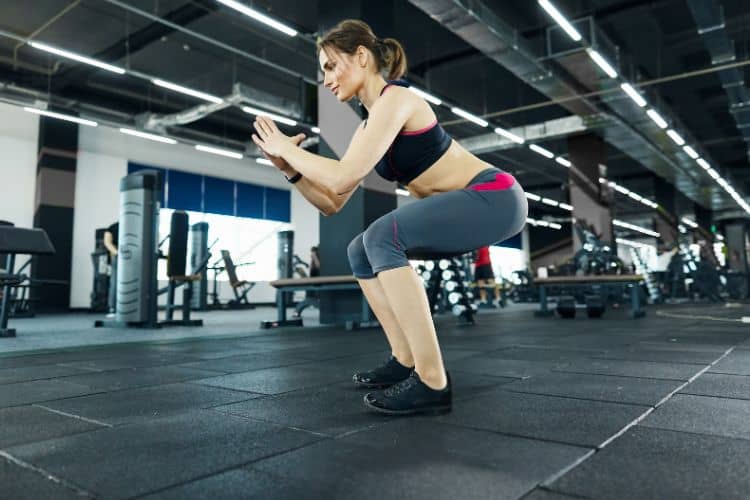
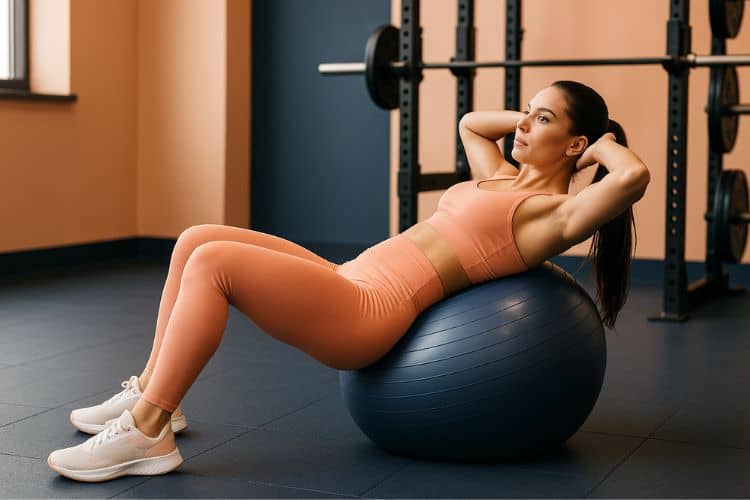
A strong core is the foundation of every movement—from walking and lifting to balancing and breathing. If you’re looking for a fun yet effective way to tone and sculpt your midsection, the exercise ball (also known as a stability or Swiss ball) is your secret weapon. This versatile tool helps you engage your core muscles more deeply by adding an element of instability, forcing your abs to work harder to maintain balance. In this complete guide, you’ll learn how to use an exercise ball for abs, the benefits of incorporating it into your workouts, safety tips, and the best ab exercises to build a strong, toned, and stable core at home or the gym.
An exercise ball is a large, inflatable ball typically used in Pilates, yoga, and strength training. Its main advantage lies in the instability it creates, which activates multiple muscles simultaneously—especially your abs, obliques, and lower back.
When you perform movements on an unstable surface like a ball, your body instinctively recruits more stabilizing muscles to keep you balanced. This makes even simple exercises like crunches or planks more challenging and effective.
Key benefits include:
Using an exercise ball regularly can transform your abdominal workouts from basic to highly functional. Here’s why:
Unlike floor ab exercises that mainly hit the rectus abdominis (the “six-pack” muscle), exercise ball moves also work your transverse abdominis, obliques, and lower back muscles, providing 360° strength.
Balancing on the ball trains your neuromuscular system to coordinate movement efficiently—this translates to better athletic performance and stability in everyday life.
The ball supports the natural curve of your back, reducing strain during crunches or twists. It’s particularly beneficial for people with mild back discomfort or stiffness.
During exercises like ball rollouts or back extensions, you move through a greater range of motion than traditional ab workouts—enhancing both strength and flexibility.
Adding a stability ball keeps your core workouts interesting and prevents boredom. You can combine it with dumbbells, resistance bands, or bodyweight movements for endless variations.
Before jumping into the workout, it’s essential to understand how to use the ball correctly to prevent injuries and maximize results.
Exercise balls come in various sizes (45–75 cm). The right size depends on your height:
When you sit on the ball, your knees should be at a 90-degree angle with your thighs parallel to the floor.
Always keep your core engaged, shoulders relaxed, and neck neutral. Avoid overarching your back or using momentum—control is key to targeting the right muscles.
Perform exercises on a non-slippery mat or carpet to prevent the ball from rolling unexpectedly.
If you’re new to the exercise ball, begin with simple static holds before progressing to dynamic movements. This builds stability and confidence.
Exhale when contracting your abs and inhale when relaxing. Controlled breathing enhances muscle engagement and prevents dizziness.
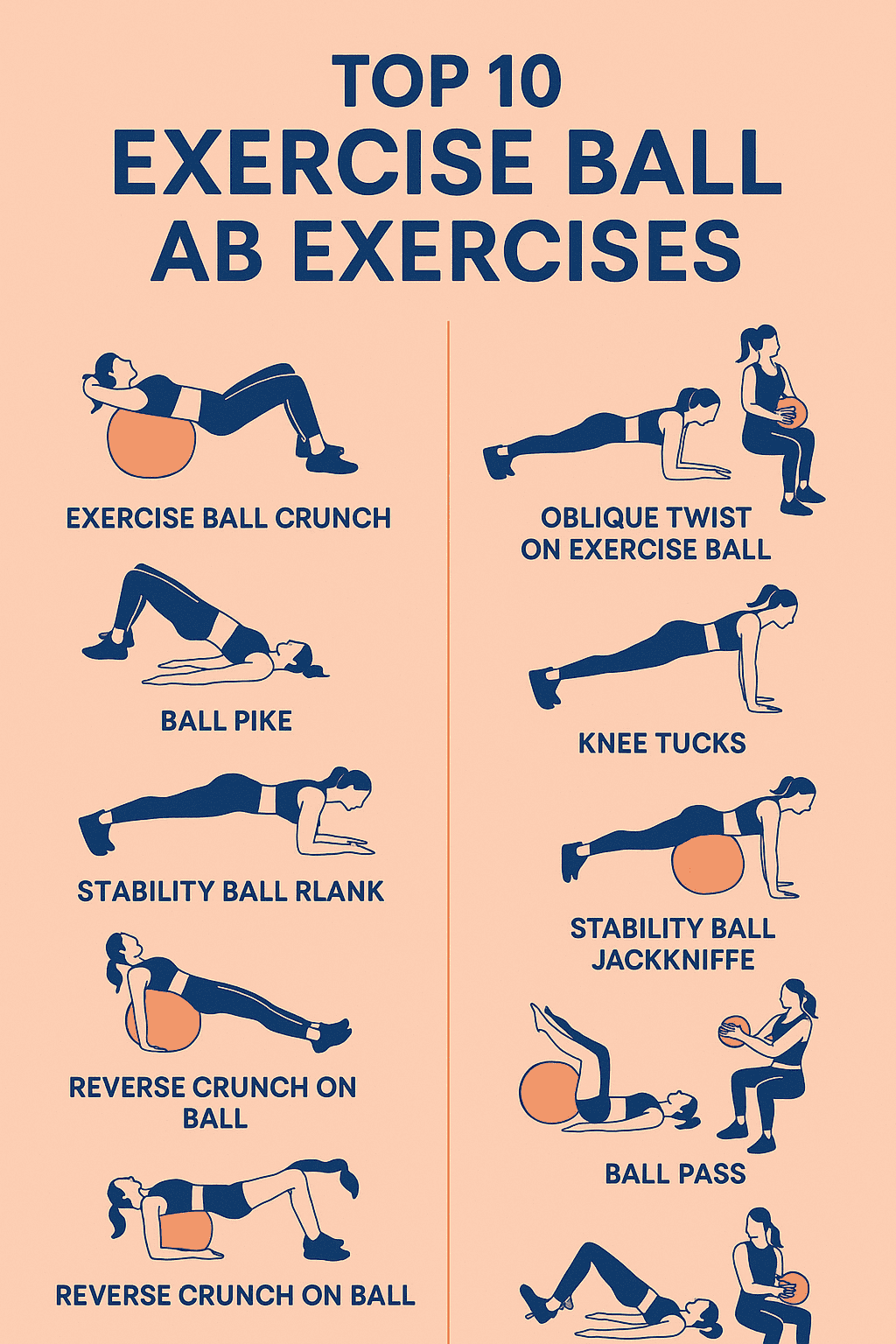
Here are some of the most effective ab exercises you can do using an exercise ball. Mix and match them to create your own core routine.
Muscles Targeted: Upper abs, lower abs, obliques
How to Do It:
Tip: Keep your chin off your chest and move slowly for maximum tension.
Muscles Targeted: Upper abs, lower abs, hip flexors, shoulders
How to Do It:
Tip: Keep your legs straight and avoid collapsing your lower back.
Muscles Targeted: Entire core, shoulders, glutes
How to Do It:
Tip: Avoid sagging hips—imagine pulling your belly button toward your spine.
Muscles Targeted: Transverse abdominis, rectus abdominis, shoulders
How to Do It:
Tip: Keep your hips slightly tucked to protect your lower back.
Muscles Targeted: Lower abs
How to Do It:
Tip: Move with control—don’t swing your legs.
Muscles Targeted: Obliques, core stabilizers
How to Do It:
Tip: Keep your hips still—focus on twisting from your waist.
Muscles Targeted: Lower abs, hip flexors, shoulders
How to Do It:
Tip: Keep your upper body stable and move slowly.
Muscles Targeted: Full core, especially lower abs
How to Do It:
Tip: Maintain tight abs throughout the movement—avoid arching your back.
Muscles Targeted: Upper and lower abs, coordination
How to Do It:
Tip: Keep your lower back pressed into the mat for stability.
Muscles Targeted: Abs, obliques, thighs
How to Do It:
Tip: Engage your core to stay balanced and avoid leaning too far forward.
Try this quick yet challenging 15-minute ab circuit using your stability ball. Perform each exercise for 45 seconds, rest for 15 seconds, and repeat the circuit 3 times.
| Exercise | Duration | Muscles Targeted |
|---|---|---|
| Ball Crunch | 45 sec | Upper abs |
| Ball Pike | 45 sec | Lower abs, shoulders |
| Ball Rollout | 45 sec | Core stabilizers |
| Oblique Twist | 45 sec | Obliques |
| Stability Ball Plank | 45 sec | Entire core |
Rest 1 minute between rounds. As you get stronger, increase the work duration or add light resistance.
Even though the ball is beginner-friendly, it’s easy to make small errors that reduce effectiveness or cause discomfort.
Fast, uncontrolled motions shift the focus away from your abs and can strain your back. Move deliberately and feel each contraction.
Ensure your neck, spine, and hips stay aligned throughout. Avoid rounding your shoulders or letting your hips sag.
An over-inflated ball feels too bouncy and unstable; an under-inflated one offers insufficient support. Your ball should feel firm but slightly compressible when you press on it.
The key to every exercise is a tight, braced core. Imagine pulling your navel toward your spine and maintaining that tension through every rep.
Proper breathing stabilizes your core and reduces fatigue. Inhale through your nose, exhale through your mouth as you contract.
To maximize your results, keep these training tips in mind:
Pair your ab training with total-body exercises like squats, lunges, or planks for balanced strength and calorie burn.
Aim for 2–3 ab sessions per week using the ball. Consistency builds strength and definition faster than occasional long workouts.
Once basic moves feel easy, try:
Don’t just go through the motions—focus on squeezing and controlling your abs with each rep.
The stability ball blends perfectly with Pilates and yoga routines, enhancing flexibility, alignment, and balance.
One of the best things about exercise balls is that they’re suitable for all fitness levels.
The ball provides support and stability, making it easier to learn proper form without straining your back.
You can increase difficulty by performing complex moves like pikes, rollouts, or single-leg variations for maximum core engagement.
Office workers or anyone who sits for long periods can use the ball to strengthen deep core muscles that stabilize the spine and improve posture.
You can easily use your stability ball beyond core workouts:
Adding 10–15 minutes of ball-based ab training at the end of your workout can accelerate your progress and help reveal toned, defined abs.
Yes, you can use it daily for gentle stability or stretching work, but limit intense ab sessions to 3–4 times per week to allow muscle recovery.
While the ball strengthens your core muscles, fat loss requires a combination of regular cardio, strength training, and a balanced diet.
Absolutely! Start with basic moves like crunches and planks, focusing on balance before progressing to dynamic exercises.
With consistent training and proper nutrition, most people notice core strength improvements within 3–4 weeks and visible toning within 6–8 weeks.
Learning how to use an exercise ball for abs opens up a world of dynamic, fun, and challenging movements that go beyond traditional crunches. Whether you’re working out at home or in the gym, the ball helps you build functional strength, balance, and core definition safely and effectively.
Make the most of your workouts by combining stability ball ab exercises with healthy eating and full-body strength routines. Stay consistent, focus on your form, and you’ll soon feel stronger, leaner, and more confident in your core strength.
Want more workout and video guide?
Follow us on Pinterest, Facebook, and Subscribe to our Newsletter and Stay tuned for FREE downloads of our App coming soon!
Stay up to date on the latest women’s health, fitness and lifestyle trends and tips.